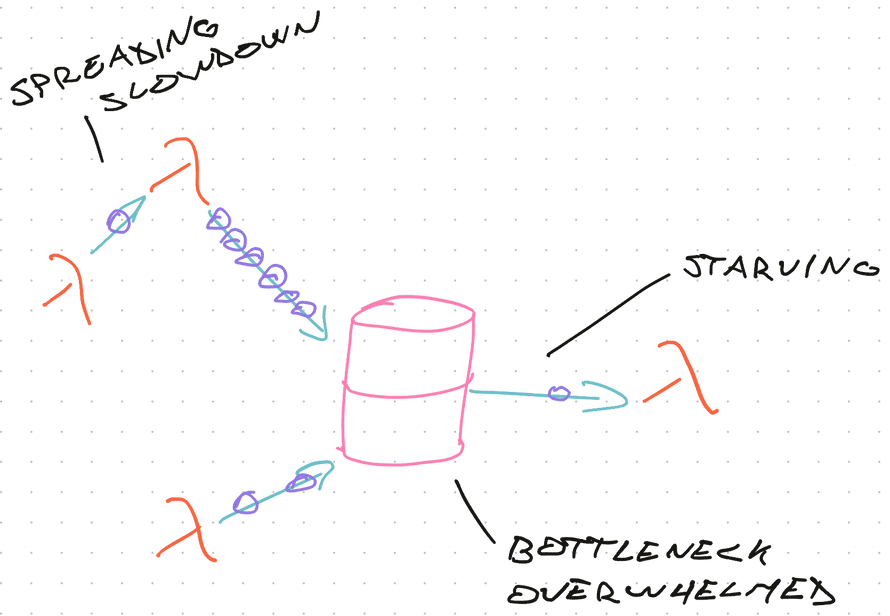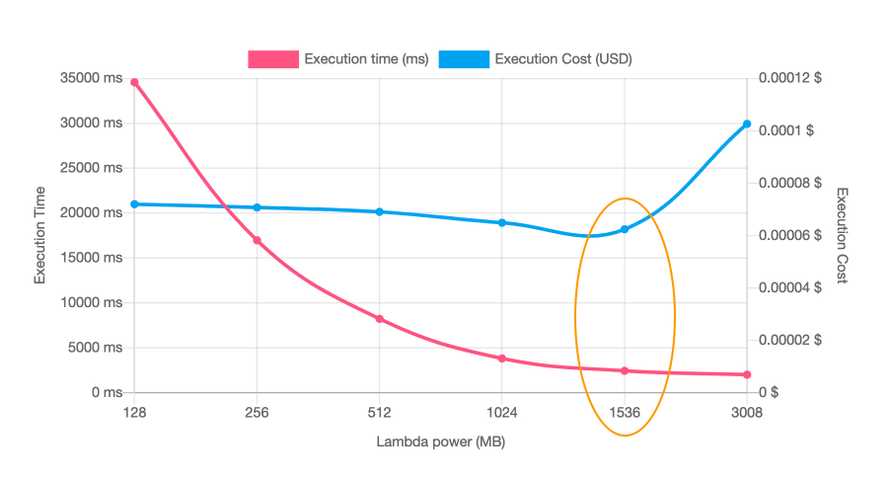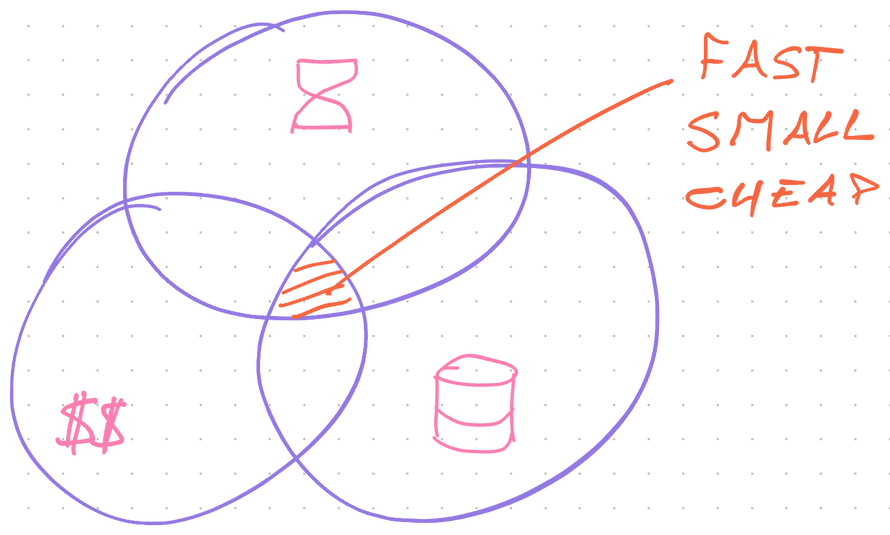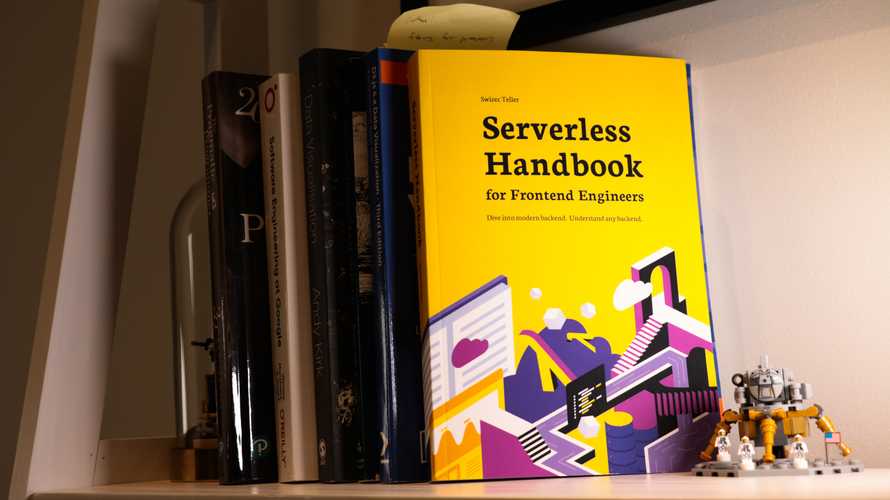Serverless performance
Performance talks about what you get per unit of a resource. Time, effort, space, energy, and money.
How much of X does it take to get N results?
We've touched on performance before. Mentioned scaling strategies in Pros and Cons of Serverless and Databases, talked about complexity in Lambda Pipelines, and mentioned flow in Robust Backend Design.
But what do you measure? What's achievable? Where do you optimize? How does serverless stack up?
The performance trifecta
Software systems care about time, money, and space. You have to balance all 3.
With metered pricing, serverless lets you pay directly for execution time, memory size, and storage space. No overhead. You don't use it, you don't pay it.
AWS Lambda charges for execution time with millisecond precision.
Faster code uses more memory to gain speed. Or you can beef up CPU. Both make your code more expensive to run.
Saving storage space costs CPU time to compress and clean data. Storage is cheap. Bandwidth to and from storage gets pricey.
You optimize memory with slower code. Memory is plentiful these days, but not in serverless. You want small functions.
Every optimization takes human time and effort. A metric that software organizations care about. How hard is the code to develop and maintain?
You can think of performance as a 4-dimensional optimization function. Speed vs. space vs. money vs. effort. Great question for a calculus exam.
Avoid doing the calculus with ye olde law of prioritization:
- Make it work
- Make it right
- Make it fast
You'll find that computers are fast & cheap and humans are slow & expensive. Stick to 1, add 2 for easier maintenance. 3 when necessary.
Where size matters
Storage is cheap – $0.023/GB/month on S3 – and memory is pretty cheap at $0.000016/GB/second. Memory cost per unit increases when you need extra. Storage cost per unit decreases when you use more.
Bandwidth is where size gets you. AWS charges for taking data out of the system. Other providers are similar.
You pay to send data to users or between availability zones. Details depend on which services are involved. For example: S3 to CloudFront (the CDN) is free, then CloudFront charges $0.085/GB.
Minimize what you send over the wire.
Thinking about speed
2 metrics matter for "speed":
- Latency
- Throughput
Best summarized with a metaphor from Andrew S. Tanenbaum:
Never underestimate the bandwidth of a station wagon full of tapes hurtling down the highway
Latency
Latency measures delay. How long does it take to start working?
You can write the fastest code in the world, but if it takes 2 seconds to get started you'll have unhappy users.
The biggest factors are:
- network time
- internal routing
- lambda wake up time
Network time measures how long it takes for a user's request to reach your server. Depends on distance and connection quality.
Routing is internal to your serverless provider. How long does it take to accept a request and send it to your code? Security rules can make this slower or faster.
Lambda wake up time measures how long it takes to spin up your tiny server. Depends on bundle size, runtime environment, and how your code warms up.
Throughput
Throughput measures how fast you work. When you get a request, how long does it take?
The biggest factors are:
- code performance
- input/output
Serverless is for small distributed operations. Code performance and algorithm complexity have little impact.
Fancy algorithms are slow when N is small, and N is usually small. Fancy algorithms have big constants. Until you know that N is frequently going to be big, don't get fancy. ~ Rob Pike
That leaves input/output.
Waiting for a database, talking to 3rd party APIs, loading a web page, those will destroy your performance.
The average duration for my screenshot lambda is 10 seconds. Mostly waiting for Chrome to start and webpages to load.
You pay for every millisecond of that wait. 🙃
Thinking about scalability
Scalability talks about how your system behaves as load grows.
What happens at 10 requests per day? What about 10,000,000?
Your system is considered scalable, if resources grow linearly or less with demand. Using 1 lambda per request may not be cheap, but it does scale.
A system that grows faster than demand blows up eventually.
This applies to teams as much as it does to computers. If you need 3 new developers to do 2x more work, your company will die.
Scaling your software comes in 2 flavors: vertical and horizontal. Use a mix of both.
Vertical scaling
Vertical scaling is the art of getting 1 computational resource to do more.
This type of scaling can get expensive. You need more resources – faster CPU, more memory, better hardware, a GPU – and lots of engineering effort to optimize your code.
For many workloads, this approach is best.
It's easier to scale a database by adding CPU and memory than by rebuilding your application to use more databases. AI researchers prefer a computer with terabytes of memory over tweaking algorithms to need less.
And sometimes it's the only way. Like processing a video.
Horizontal scaling
Horizontal scaling is the art of splitting work between computational resources.
This type of scaling can be cheap. Easier to provision, quicker to get going, less effort to optimize.
But you have to find a balance. 6 cheap computers can cost more than 3 expensive computers.
That's where serverless shines.
Horizontal scaling is perfect for isolated operations with little inter-dependency. Like API requests, processing a video library, or serving static files.
Use the map-reduce pattern to split larger tasks like we did in the Lambda Pipelines chapter. You pay with system complexity.
Achieving speed
Never optimize your code until it tells you where it hurts. Bottlenecks are surprising and unpredictable. Measure.
But don't kick the table with your pinky toe either. You already know that hurts.
For maximum speed in serverless environments focus on:
- cold wake up times
- reducing input output
- fast simple code
Cold wake up times
Traditional servers split performance into warm and cold. The server starts cold and warms up its caches, algorithm setup, and execution environment with the first few requests.
Most requests reach a warm server which is orders of magnitude faster.
With serverless, every request could be cold.
There is no one solution I can give you. Optimizing cold boot performance takes work and understanding your software.
A few areas to look at:
- Use a language with a fast and nimble runtime. JavaScript is surprisingly effective, Go can work great. JVM-based languages tend to struggle.
- Ruthlessly reduce bundle size. The less code that needs to load, the better. Compile and minimize your source, remove un-needed dependencies. Use the
excludeconfig inserverless.yml. - Avoid fancy algorithms with large constants. Iterating your data 5x to set up a fast algorithm may not be worth it. You're processing small payloads.
Reduce input output
The biggest performance killer is input/output. Your tiny server comes with no batteries included.
Want to read from cache? Network request. Database? Network request. Call an API? Yep, network.
Networks are slow. If reading a variable is like brushing your teeth, a roundtrip with your database is like a 6 day vacation. 🤯
Providers optimize these "external" requests but you have no control and there are hard limits at play.
Best you can do is minimize.
- do more in 1 request (like bigger SQL queries)
- avoid I/O in a loop, try to pre-fetch
- prefer local memoization over cache
Memoization vs. cache
Memoization stores results in a local variable. Call your function with the same inputs and return the value without recalculating.
But you lose memory when your lambda goes to bed. That's where a cache can help. A service with persistent memory that stores pre-computed values.
Like your database, the caching service is an external request. Much slower than a local variable.
Use memoization when you call the same code multiple times per request. Use cache when you need the same data across many requests.
When you get requests frequently enough, serverless providers reuse your code between executions. Memoizing in "global" memory does wonders.
In pseudo-javascript:
let memoized = nullexports.handler = function (argument) {if (!memoized) {memoized = expensiveComputation()}return memoized}
Fast simple code
Keep it simple.
Use the fastest check as your first argument in an && or || chain. Computers skip arguments that can't change the result.
Avoid doing work that you'll throw away 10 lines later.
An O(n) search can be faster than building a hashmap in O(n) and reading it once.
Think of your system as a whole
Once you've optimized individual components, it's time to look at your system as a whole. Find the bottlenecks.
The fastest algorithm in the world is worthless when throttled by a slow database.
A bottleneck happens when there's a performance mismatch between parts of your system. Fast code feeding into slow code. Slow code that your whole system relies on ...
Typical offenders include:
- large computation (like video and image processing)
- poorly optimized databases
- 3rd party APIs

You can find the bottleneck by looking at your queues. Is one of them filling up with data? Likely feeding a bottleneck.
You can look at Lambda execution times. A slow Lambda could be full of bad code, more likely it's talking to a bottleneck.
Can you move it off the critical path? Cache or memoize any API and database responses?
The exact answer depends on your code and your system.
Optimizing cost
Value your time.
I talked to an AWS billing expert and that was the take-away. Then I killed the whole chapter on cost.
Your time is worth more than your bill.
However, he suggested you try AWS Lambda Power Tuning. A tool that tries your lambda in different configurations and shows the balance between power, speed, and cost.

Execution time goes from 35s with 128MB to less than 3s with 1.5GB, while being 14% cheaper to run.
A great example of how vertical scaling beats horizontal. But you keep every benefit of horizontal, because serverless. 🚀
Next chapter we look at running Serverless Chrome, a typical case where beefy lambdas help lots.



